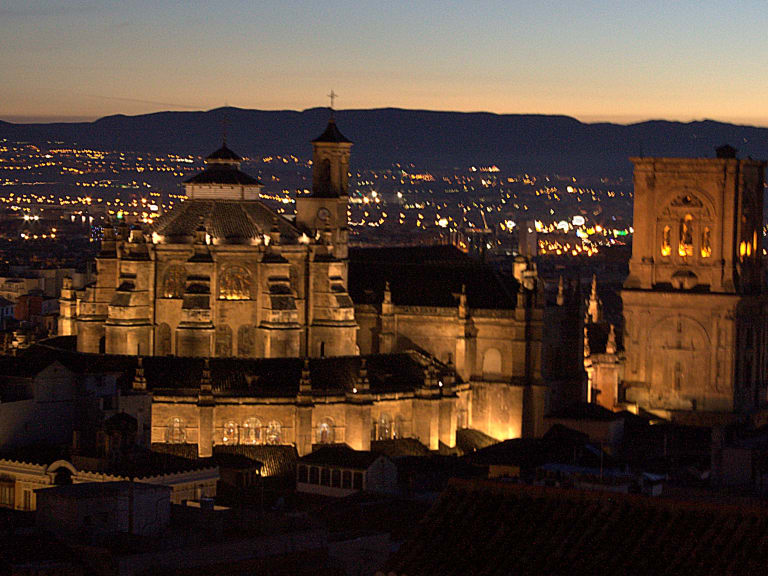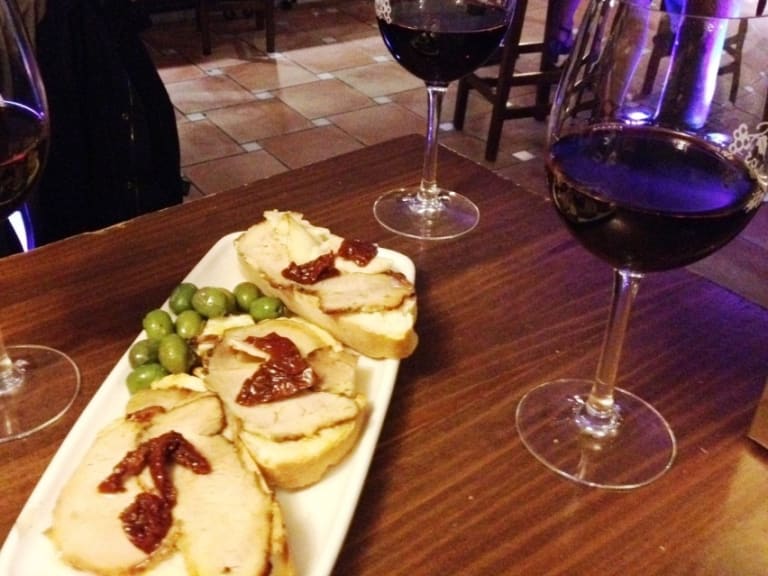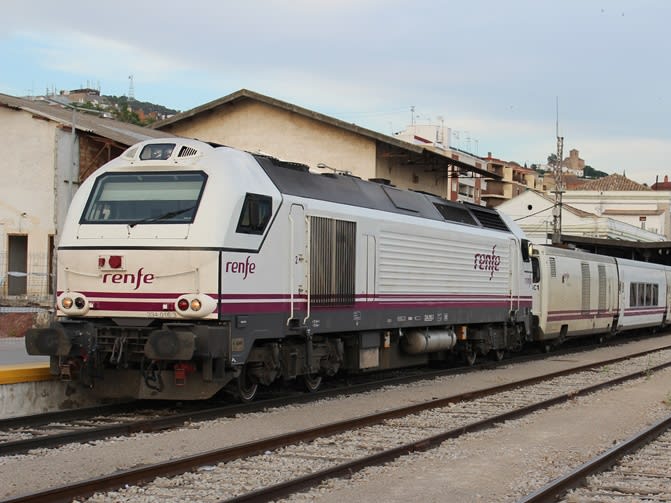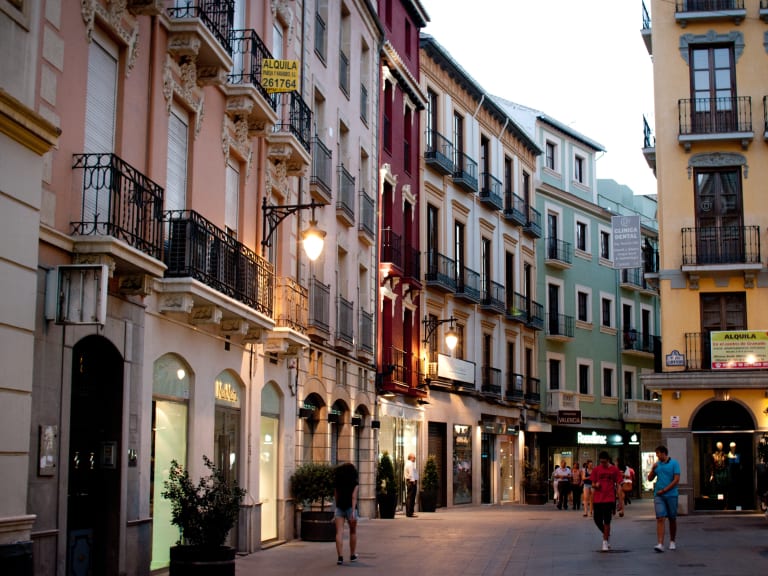More about: Best Things to Do In Granada In 2 Days
Do you want to get to know Granada and you only have a weekend? Don't worry, I'll help you find the time to visit the must-see places like the Alhambra, the Albaicín and Sacromonte neighbourhoods, the Royal Chapel and the Cathedral, the Plaza Nueva, some flamenco shows, and of course some tapas bars, because not everything is walking in this life!
Surely, after 2 days of sightseeing, you will want to come back and enjoy all there is to see and do in Granada. This Spanish city, above all others, has that special ability to conquer the heart of each and every one of its visitors.
Day 1: Tour of the Alhambra, Plaza Nueva, Paseo de los Tristes and the Albaicín neighbourhood

Visiting Granada takes time, as it is an absolutely incredible city, full of history and charming corners. Wear comfortable shoes, because you're in for a long day of walking.
Tour the Alhambra to discover all its treasures
Perhaps one of the most imposing attractions in all of Spain, the Alhambra is truly a place of dreams.
Home for centuries to the Nasrid kings, this complex is a testament to the majesty of the Muslim empire in Spain, as it is one of the finest examples of Moorish architecture still standing.
Its fountains, tiles, columns and gardens, as well as the attention to detail in every corner of the complex, make it truly unique.
But you are probably wondering how long a visit to the Alhambra takes. Although it is so vast that it seems like a city in itself, its main sites can be visited on your own in about 3 or 4 hours if you hurry a bit, of course.
Bear in mind that to see the Alhambra in detail you would need about 6 or 7 hours, that is to say, practically a large part of the day, so you won't have time to visit other attractions in the city. So take it as just a first glimpse of this amazing place. I assure you: you'll want to come back.
On our tour of this Nasrid paradise you can't miss the Patio de los Leones, the walled city (the Alcazaba), the Generalife gardens and the Nasrid Palaces, because you can't leave the Alhambra without enjoying all these wonders.
If you want to go directly to the most interesting points and, at the same time, receive information about what you are seeing, it is highly recommended to hire a guided tour of the Alhambra.
Although if you're on a tight budget, here's how to get free or discounted tickets to the Alhambra. And here are some tips for visiting the Alhambra for you to keep in mind, both on this and your next visit.
A break in the Plaza Nueva
After touring the Alhambra, a little less than half an hour's walk from the entrance is the Plaza Nueva, an ideal place to rest for a moment and have a cool drink, while appreciating the imposing buildings around it.
Plaza Nueva is the main and oldest square in the whole of Granada, so its name doesn't seem quite right... if there's one thing this square isn't, it's new.
It has witnessed many moments in the history of Andalusia. Bullfights and even executions used to take place here.
Opposite the square are the Palacio de la Cancillería Real and the Iglesia de Santa Ana, both with their mixture of Renaissance and Mudejar styles.
Today it is a relaxed and very central place where you can have a beer and continue your tour of the city, as from here you can start your visit to the Albaicín and Sacromonte, via the beautiful Carrera del Río Darro, an undulating and picturesque stone path that runs alongside the river of the same name.
The Carrera del Darro would merit an article in itself. This beautiful cobbled walkway, with its beautiful and historic stone and stonework bridges (14 in total) is definitely one of the places to see and enjoy in the city of Granada.
It is also one of the places that has been modified the least over the centuries, it has been preserved almost intact, so walking along it will make you feel part of Andalusian history.
Walk through the most romantic corner of Granada: the Paseo de los Tristes (Walk of the Sad)

Before reaching the Albaicín neighbourhood, and located in the heart of the Darro Valley, you will come across the most pleasant street in the whole of Granada: El Paseo de los Tristes.
Its original name was not that, but since it was on the way to the cemetery of San José, the people of the city ended up calling it Paseo de los Tristes.
From there you can see some of the vegetation of the Alhambra and some of the beautiful stone bridges over the river Darro.
Undoubtedly one of the most bohemian and romantic walks in all of Granada, its little streets and bars make it a space full of charm, impossible to miss on a 2-day visit to this beautiful city.
But before continuing on to the Albaicín neighbourhood, it will be time for lunch. In this area there are many restaurants where you can sit down and recharge your batteries. If the weather is nice you can enjoy a taste of Granada's food on one of the many open-air terraces.
I especially recommend the restaurant La Ruta del Azafrán, located on the Paseo de los Tristes. With views of the Alhambra and a menu to suit all tastes and palates, you won't find a better option.
Visit the Albaicín neighbourhood
Now, after eating like a king (or queen), continue on your way to El Albaicín, the oldest quarter of Granada.
Declared a World Heritage Site in 1994 by Unesco, due to its great beauty, the Albaicín is one of the most beautiful examples of medieval Muslim-Spanish architecture, making it a must-see.
You may not have enough time for an in-depth tour of the neighbourhood, but you should definitely stop by the famous Casa de Zafra, the only Muslim dwelling that pre-dates the Catholic Monarchs. Declared an Asset of Cultural Interest and a Historic-Artistic Monument, it houses the Albaicín Interpretation Centre.
The Casa de Zafra is located in the lower Albaicín, just off the Paseo de los Tristes.
Enjoy the best views of the city at the Mirador San Nicolás and the Mirador de La Vereda de Enmedio
What you have to bear in mind when touring this neighbourhood is that, beyond the unmissable sights, its charm lies in walking through its medieval streets, finding unexplored corners, its beautiful and traditional Granadian cármenes and viewpoints, such as San Nicolás or La Vereda de Enmedio.
From these viewpoints you will be able to contemplate the sunset over an Alhambra already lit up in reddish tones. This is one of the most typical postcards of the city, although I recommend you arrive with plenty of time, as they tend to fill up with people.
There's nothing better than ending the day in the neighbourhood with the most personality in the city. In any of its restaurants you can try typical Andalusian food, dishes such as almond soup, Salmorejo or Patatas a lo Pobre, are now classics.
Although if you have to talk about classic dishes of the region, the fried aubergines with honey can't be compared to anything else. Try them and then tell me about them.
Day 2: Royal Chapel and Cathedral of Granada, tapas bars, Sacromonte quarter and Flamenco Night

If you thought the first day in Granada was amazing, wait until you see what I have in store for you on this second and last day. We'll stroll through the old town and sample some of its most deeply-rooted traditions: flamenco and tapas.
Visit the Old Town, the Cathedral and the Royal Chapel
Start your second and last day in Granada with a visit to the historic quarter. There, in addition to a layout of streets that seem to have been frozen in time, you will find the imposing Cathedral of Granada, and next to it the Royal Chapel.
After Seville Cathedral, this is the largest cathedral in Spain and the first to be built in the Renaissance style. Next to it is the Royal Chapel, where the remains of the Catholic kings, Isabella I of Castile and Ferdinand II of Aragon, rest. In addition, the main altarpiece is a true marvel and an example of Spanish art.
Although it may not have the fame of the Alhambra, I recommend a visit to Granada Cathedral. Tickets start at €5 and include an audio guide via an app.
Both the Cathedral and the Royal Chapel are architecturally imposing, and inside you can enjoy many works of art by Granada-born Alonso Cano, as well as other awe-inspiring details.
Opposite the Royal Chapel you will find La Madraza, a building dating from 1349 which served as the first centre of higher studies in theology, mathematics, medicine and law. Today this building can be visited, as it is used as an exhibition centre by the University of Granada.
Visit one of the living monuments of the city's Muslim past: La Alcaicería
During the 14th century this network of streets was one of the most important commercial centres in Granada. In this ancient souk you could buy delicate silks, spices and hundreds of other products.
Nowadays, the Alcaicería has become a must-see place to get to know a little of Granada's Arab past, so you can't miss it.
Although the original Alcaicería was totally destroyed by a major fire in 1843, its reconstruction respected the original architecture, with a neo-Moorish and romantic style. Today it retains the charm and colour of the first one. Definitely a place to see on your 2-day visit to Granada.
It's time to enjoy some good tapas

So much walking works up an appetite, and there's nothing better than sitting on a terrace and enjoying a good portion of tapas. I recommend Bar La Riviera, which has a wide variety of tapas and an unbeatable atmosphere. Or the classic Los Manueles, which has been serving tapas since 1917! All homemade and of excellent quality.
As always the tapas are free, you only have to pay for the drink. Don't leave without trying the croquettes... they are truly a dream.
With only 2 days you can only get a small idea of how tasty everything is here, and for your next trip I recommend you to hire some of the best tapas tours in Granada, a tour of the most delicious bars and restaurants in the city, especially for those who like to delight in the flavours of Granada.
Visit the Sacromonte neighbourhood, the birthplace of Flamenco
The Sacromonte quarter is, together with the Albaicín, one of the most emblematic places in Granada.
It is said that one of the most traditionally Spanish musical styles was born here: flamenco. Although a flamenco singer or dancer would say that flamenco is not a musical style but a way of life.
Located high up, overlooking the Alhambra and the Albaicín, Sacromonte was originally a gypsy suburb, where the most traditional and picturesque houses are the so-called caves. For centuries the gypsy community took refuge in these humble cave-houses.
This curious mixture of cultures, gypsy, Spanish and Muslim, gave birth to the zambra mora, the most typical flamenco of Granada.
Today, the most famous caves are the Cueva de la Rocío and the Cueva de María la Canastera, both dedicated to flamenco shows. In former times the shows were more spontaneous and improvised, nowadays shows are put on for the tourists who come to Sacromonte in search of the most traditional flamenco.
Don't miss a visit to the Cuevas del Sacromonte Museum, ideal for learning a little more about the history of the neighbourhood, the gypsy culture and the birth of flamenco as the suffering voice of an entire people.
Enjoy an authentic flamenco show
After touring the Sacromonte neighbourhood, you're sure to be in the mood for a bit of flamenco. On this second and last night in Granada, there's nothing better than to say goodbye to the city with pure gypsy song and dance.
Being one of its cradles, there are many tablaos or centres where you can listen to and see good flamenco in the city.
In the Sacromonte area you have the zambras I have mentioned (Cueva de la Rocío and Cueva de María la Canastera). In other areas of the city you can find shows of excellent quality, highly recommended, such as the tablaos La Alboreá and Casa Ana, with artists of the highest level.
My advice is to choose from some of the best flamenco shows in Granada, and let yourself be conquered by its lively spirit.
In case you didn't know, in 2010, Unesco declared flamenco Intangible Cultural Heritage of Humanity. This is a way of ensuring the preservation of this expression so typical of the identity of Andalusia and Spain.
We have reached the end of our journey and we are sure that you have been left wanting more. If you are still not ready to go back to your hotel, here are some more ideas, these are 10 things to do in Granada at night, because the city's nightlife is throbbing, you'll see.
How to get around the city of Granada?

Granada is a relatively small city, especially in the city centre, so it is very easy to walk to any of the places I have mentioned in this article.
From the Alhambra to the Cathedral you have approximately 20 minutes, and from the Cathedral to the Albaicín neighbourhood another 5 minutes. Moreover, the city is ideal to get around in this way, as by bus or car you would not be able to enjoy the surroundings or stop to feel part of the place. Also, Granada is a real nightmare to park.
The steepest streets with their nooks and crannies and viewpoints are perfect for getting lost and discovering the charm of the city. Of course, if you have a health problem that makes the steepness difficult, you can hop on bus 2 in Plaza Nueva and get off in the upper part of the city.
When is the best time to travel to Granada?

Definitely the best time of the year to visit this beautiful city is in the autumn and spring months (March to June and September to December), as the winters are very cold and the summers are quite stifling, with temperatures exceeding 40 degrees Celsius.




